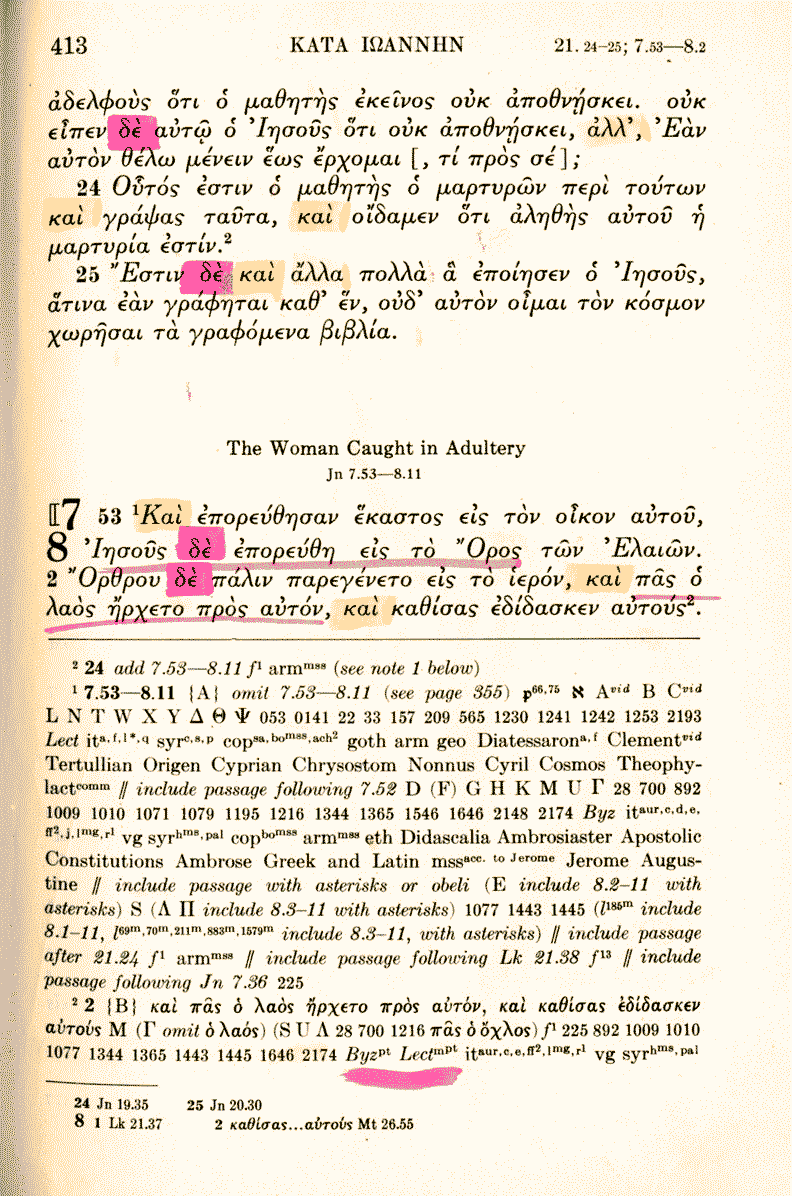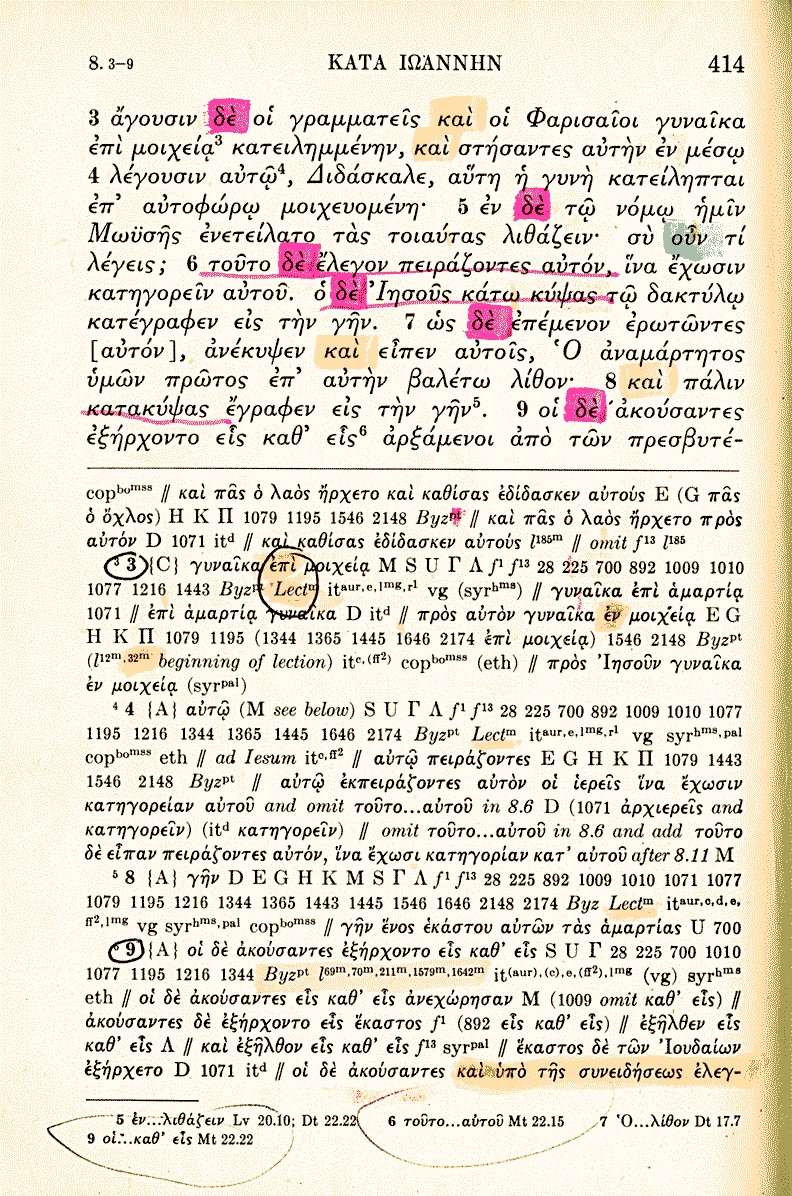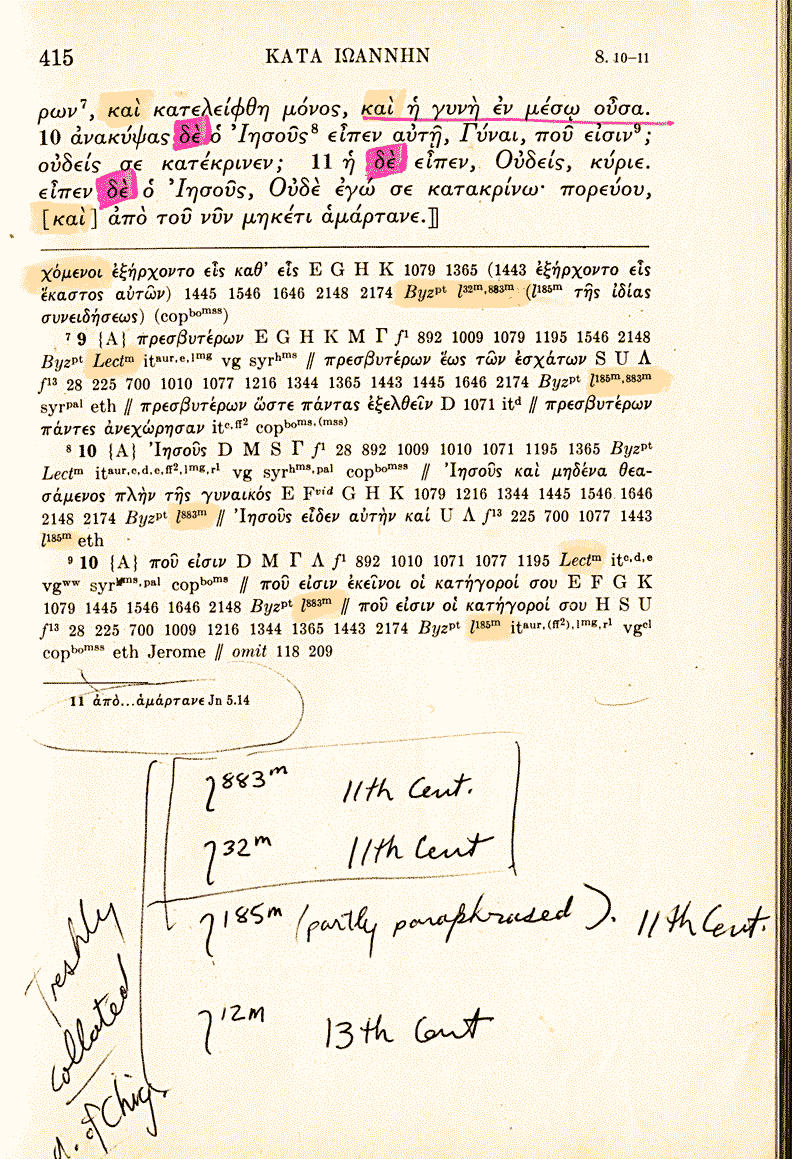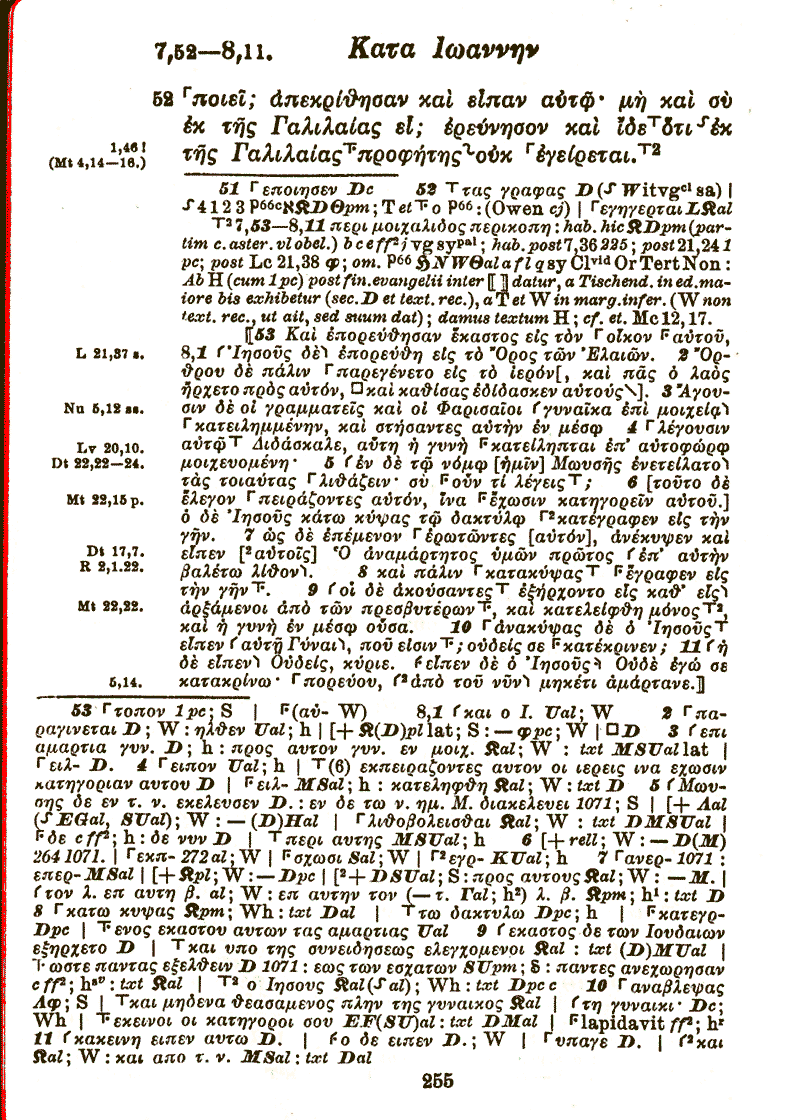Text and Apparatus
from Introduction, pg x,xi
The Textual Apparatus
As has been stated in the preface, the variant readings cited in the textual apparatus are primarily those which are significant for translators or necessary for establishing the text. A few other variants have been included because they contain important differences in the forms of proper names or because they provide valuable supplementary information.
1. The Evaluation of Evidence for the Text
By means of the letters A, B, C, D, enclosed within "braces" { } at the beginning of each set of textual variants, the Committee has sought to indicate the relative degree of certainty, arrived at on the basis of interanl considerations as well as of external evidence, for the reading adopted as the text. The letter A signifies that the text is virtually certain, while B indicates that there is some degree of doubt. The letter C means that there is considerable degree of doubt whether the text or the apparatus contains the superior readings, while D shows that there is a very hight degree of doubt concerning the reading selected for the text.
The apparently large number of C decisions is due to the circumstance that many readings in the A and B classes have had no variants included in the apparatus because they were not important for the purposes of this edition. By far the greatest proportion of the text represents what may be called an A degree of certainty.
Text and Apparatus: Pericope de Adultera,
Von Soden's NT pg 427-428
The actual text of the passage has been removed completely from its normal place in John between verse 7:52 and 8:12. Following Westcott and Hort (1881) the editors put the entire passage at the end of John's Gospel as an appendix.
The rating, {A} in the apparatus for the passage just before "omit" means that the editors are 'virtually certain' that this passage is NOT a part of John's Gospel at all. (This judgement would be based upon the evidence, interpretation, and arguments accumulated from the 1840's until the 1960's. However, this judgement will only represent the opinion of one particular group of academics and scholars, and not the opinions of others., particularly evangelical and conservative Christian scholars.)
Once the passage is judged to be 'an addition' to the Gospel, the ratings of other textual variants within the passage will have an entirely different meaning and import than suggested by the general introduction. For instance, the { B } rating for the long variant in verse 2 no longer indicates authenticity, but rather now must refer to its possible origin as from the foreign passage.
Yet with no body of work at all (we have less than 12 verses here) to judge the style of the author of the passage, all these judgements now become extremely subjective, even when based upon 'manuscript variants' which contain the passage. No plausible way of evaluating the variant readings of a 'foreign fragment' found embedded in Gospel manuscripts has ever been proposed or accepted. No study of how scribes might 'edit' a foreign anecdote has been done.
The highlights and notes on this dog-eared copy of UBS2 are the result of its repeated use as a student's textbook and can be ignored.



APPENDIX: Nestle Text 1960:
John 7:53-8:11 is removed from the main text in the Nestle Edition (1960) and placed in the footnotes with its own apparatus.
